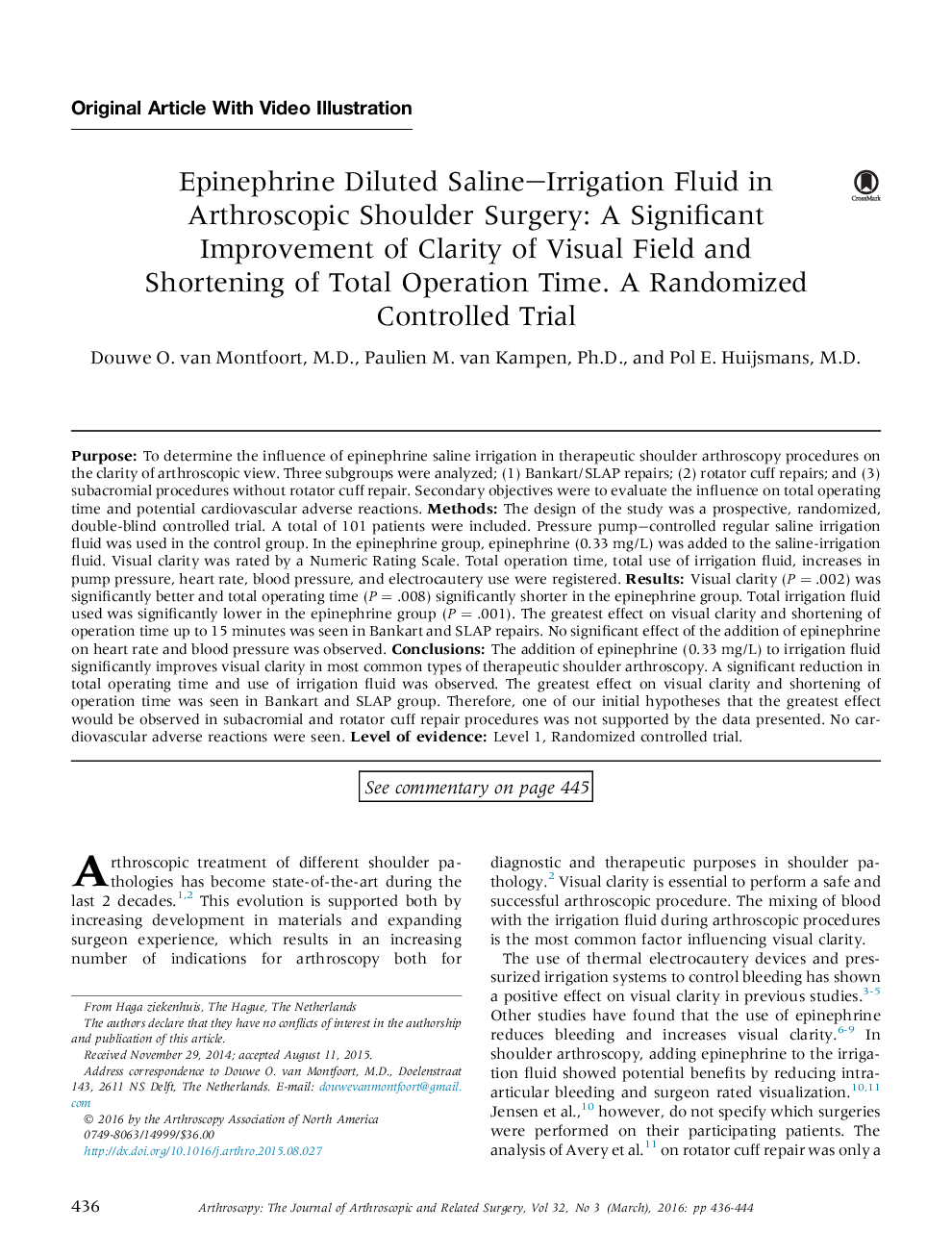| Article ID | Journal | Published Year | Pages | File Type |
|---|---|---|---|---|
| 4042000 | Arthroscopy: The Journal of Arthroscopic & Related Surgery | 2016 | 9 Pages |
PurposeTo determine the influence of epinephrine saline irrigation in therapeutic shoulder arthroscopy procedures on the clarity of arthroscopic view. Three subgroups were analyzed; (1) Bankart/SLAP repairs; (2) rotator cuff repairs; and (3) subacromial procedures without rotator cuff repair. Secondary objectives were to evaluate the influence on total operating time and potential cardiovascular adverse reactions.MethodsThe design of the study was a prospective, randomized, double-blind controlled trial. A total of 101 patients were included. Pressure pump−controlled regular saline irrigation fluid was used in the control group. In the epinephrine group, epinephrine (0.33 mg/L) was added to the saline-irrigation fluid. Visual clarity was rated by a Numeric Rating Scale. Total operation time, total use of irrigation fluid, increases in pump pressure, heart rate, blood pressure, and electrocautery use were registered.ResultsVisual clarity (P = .002) was significantly better and total operating time (P = .008) significantly shorter in the epinephrine group. Total irrigation fluid used was significantly lower in the epinephrine group (P = .001). The greatest effect on visual clarity and shortening of operation time up to 15 minutes was seen in Bankart and SLAP repairs. No significant effect of the addition of epinephrine on heart rate and blood pressure was observed.ConclusionsThe addition of epinephrine (0.33 mg/L) to irrigation fluid significantly improves visual clarity in most common types of therapeutic shoulder arthroscopy. A significant reduction in total operating time and use of irrigation fluid was observed. The greatest effect on visual clarity and shortening of operation time was seen in Bankart and SLAP group. Therefore, one of our initial hypotheses that the greatest effect would be observed in subacromial and rotator cuff repair procedures was not supported by the data presented. No cardiovascular adverse reactions were seen.Level of evidenceLevel 1, Randomized controlled trial.
